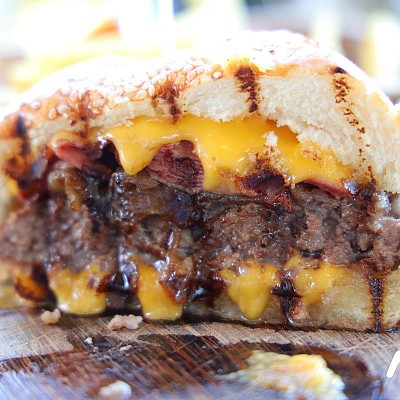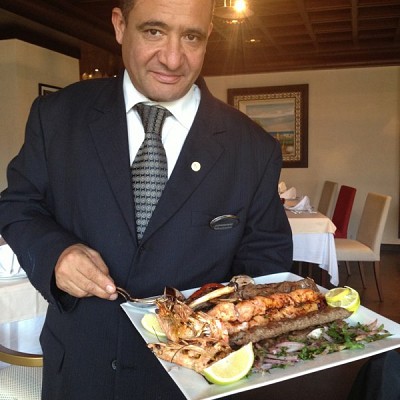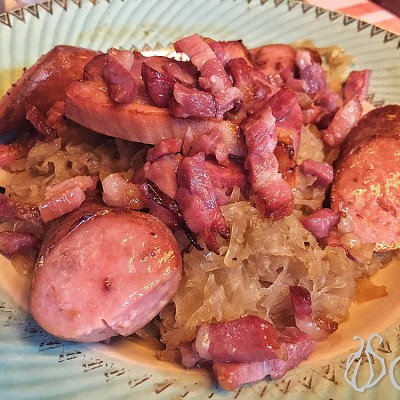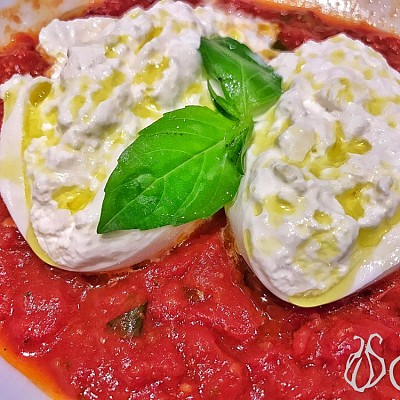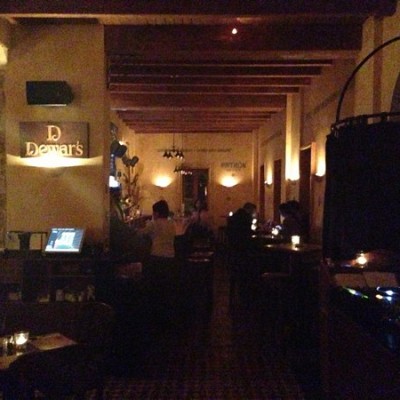Thinking of converting your home and love of cooking into a business? Turning what you love to do into the seeds of a business doesn’t have to be the stuff of dreams, not when you put some meat and potatoes into your plan. Today, the restaurant and food delivery serviceis changing dramatically as more businesses diversify what they do. Many home chefs and cooks are cutting back on the overhead of operating a dine-in eatery in order to cater to the large demographic of customers who prefer dining at home. Others literally transform a section of their home into a cafe or dining room for customers. There’s no reason you can’t do either or both.
Many customers are looking for delicious home-cooked meals that feature fresh and healthy ingredients. Can you deliver these meals? What types of cuisine do you specialize in cooking? What customers do you think your culinary skills would appeal to most? While there is no guarantee that any business will become a success, when you’re doing something that you love and that you’re good at, you can make a tremendous go of it, especially when you take care to plan each aspect of your business.
One thing that’s in your favor as a home restaurateur: people love food. You’ll be preparing something that we all need. By focusing on your budget, kitchen and dining space, menu,target audience, and marketing, you can get your cooking business off the ground and onto the plates of hungry customers. The following guide can help you set up your restaurant.
Begin Your Home Cooking Business with a Plan
A good restaurant business plan takes time and careful research to develop. Even if you’re considering a modest operation, you need to consider every aspect of starting and running a business so that you’re fully prepared. Don’t forget proper restaurant cash flow management is critical for success. The better your preparation, the more likely your business launch will be a success. Naturally, you can always modify your plan over time, but you’ll want to include the following focuses in your plan so that you can budget for them and think critically about how to proceed.
Define Your Cuisine Style
The type of food you choose to cook is an important one. Of course, you will probably gravitate to the cuisine you prepare well. But before you cement your plan, take care to investigate the costs of ingredients. You’ll need to invest in those ingredients each week. The more you invest, the more food you need to sell, the more food you need to sell at a higher cost. Here are a few cuisine types that you might consider for your home restaurant business:
Seafood
In many regions, seafood sells like hotcakes. If you live on a coast, you will easily be able to procure fresh seafood without the need to pay high shipping costs for your star ingredients. That’s not to say that you can’t run a successful seafood business in Nebraska or some other landlocked state, but you need to factor in the logistics and costs of getting your supplies.
Additionally, what type of seafood meals will you prepare? Are you catering to a lunch crowd or dinner crowd? Are you hoping to prepare fancy sit-down meals over sea bass, or do you envision a takeout service with lots of lobster rolls and fish and chips? Seafood is a broad food category; when planning your business, try to get as specific as possible.
Steakhouse
Steakhouse restaurants frequently cater to customers looking for a nice, sit-down dinner who expect to pay between midrange and upper-range prices for quality steaks, chops, and premium sides like homemade mashed potatoes and freshly baked bread. These restaurants typically feature a comfortable ambience as well as more traditional decorative styles. Of course, that doesn’t mean you can’t turn the classic steakhouse idea on its head and open up a Korean steakhouse, an Argentinian steakhouse, or even a Texas-style steakhouse with bold, rustic decor.
Family-Style
The key to a successful family-style restaurant is to create a welcoming atmosphere with family-friendly and budget-friendly meals. To that end, don’t leave the chicken tenders off the menu, and include a few other items that are popular with your younger customers. In fact, be sure to offer meals that have general appeal so that you’ll entice everyone in the family.
Ethnic
Who doesn’t love Italian, Mexican, or Chinese food? Turn the food you love or grew up with into the heart of your business plan. Ethnic restaurants can be highly successful whether they’re Greek, Polish, Brazilian, or Moroccan. Ethnic restaurants can be especially popular in metropolitan locations where you’ll have a diverse range of customers. No matter what cuisine you choose to serve, you’ll want to make sure it will attract the taste buds of your local customer base.
Deli
A deli is perfect for owners who are located in an area that’s busy during the lunch hour. You’ll be able to attract customers looking for homemade sausages and other deli fare to bring home to feature in their own dishes and people looking for a comfortable lunch spot where they can enjoy freshly made soups, salads, and sandwiches. You might also specialize in some international fare at your deli or feature a daily hot meal special.
Bakery
People love a good bakery. Store-bought bread and cakes just can’t compare with the stuff made daily at a local bakery. Baking is a labor of love. If you choose to open a bakery, you can specialize in artisan bread, doughnuts, and pastries, or even wedding cakes and other special occasion cakes or cupcakes. If you choose, you can open up a small area for diners to enjoy pastries and coffee.
Coffee Shop
Is your home near a train stop, bus stop, or business street? If so, you may have a prime location for opening a coffee shop. Treat your customers to specialty coffees, teas, and pastries. You can feature a cafe area for customers who want to sit in, or you can strictly sell your java to go.
Craft Your Menu
Your menu will take some careful preparation too. It’s not only crucial to serve the food you make especially well, but also food that’s likely to sell well and won’t cost you too much to prepare. After all, you’ll want to make some profit to pay yourself for your work and invest back into your business.
Once you choose your cuisine type, do some research to see how many similar restaurants operate in your area. Are they routinely busy? What’s on their menu, and what can you serve that is different? Before you finalize your menu, be sure that you can easily procure all the ingredients you need for each dish at pricing you can afford. Then, you’ll want to price your meals in order to make a profit on each.
Make a Financial Plan
Launching a business requires fiscal investment, but how much? That’s why you need to create a financial plan. What equipment do you need to purchase? Do you need to renovate your space? How much will that cost? Supplies like dishes, tablecloths, new furnishings, point-of-sale equipment, cookware, packaging, marketing (you’ll want a website), staff costs, insurance costs… the list goes on. So, make your list and research all the costs associated with opening and running your business for the first six months. Then, begin to think about what you need to make each week to recoup those expenses.
Don’t Forget Safety Regulations
Health and safety regulations are paramount. Not only will you need to obtain the proper license for selling food items and maintaining a restaurant up to code, but you’ll also have to make sure that your location is zoned for this type of activity. If your home is not zoned for commercial transactions, you may need to open your restaurant at another location.
Business Plan
Your business plan will go hand in hand with your financial plan. However, it’s not just about the money. Your business plan will cover your marketing and customer service plans. It may contain both your business’s short-term and long-term goals. It will include how you intend to hire and train employees working for you.
Choosing the Right Restaurant Kitchen Equipment
Commercial, restaurant-grade kitchen equipment isn’t cheap, but that’s because it’s designed to stand up to ongoing use. Naturally, if you can purchase the best of everything, so much the better. However, if you’re working with a tight budget, you’ll need to prioritize your dollars and invest in the best where you can. For instance, a top-quality mixer is an essential buy for a bakery. If you’re operating a deli, you may not need a top-of-the-line model. Here are a few key pieces that you’ll want to shop for in most cases:
- Refrigerators/freezers
- Oven
- Cooking line
- Deep fryer
- Mixer
- Pots/pans/utensils
- Espresso machine
- Shelving
Organize Your Kitchen
A successful kitchen operates with efficiency. To that end, you’ll want to organize your kitchen so that you can streamline meal preparation. But that’s not all. With proper kitchen organization, you’ll find it much easier to take a daily inventory of your supplies so that you know what ingredients you must order. To organize your kitchen, consider the following:
Keep Items in Easy Reach
What items will you use most frequently in your kitchen? These are items you’ll need to ensure are easily accessible. For example, you’ll need spices and dried herbs for most dishes. You’ll also need a variety of pots and pans to cook with. Where can you keep these items so that you can retrieve them easily? Consider installing overhead pan racks and open shelving so that you can easily grab plates and cooking ingredients.
Designate Zones
Create zones in your kitchen to keep it organized. You’ll need an area for preparation, cooking, and an area for cleaning (which should be kept distant from your preparation zone). There are different kitchen layouts you can adopt. Choose one that’s conducive to the types of menu items you offer. For instance, group items together that are served together. Keep soup, soup bowls, and crackers in one area. You may wish to create a station for salad preparation.
Perhaps most importantly, check with local regulations to ensure that your kitchen layout plan satisfies them. For instance, there are standards that apply to food preparation, storage, and disposal, and these will naturally affect how you organize your kitchen and its zones.
First In, First Out
Part of running an organized kitchen is managing your inventory of ingredients. It’s essential to carefully date all of your ingredients and use the ingredients you purchase first before you reach for the newest ingredients so that you waste as little as possible. For example, the milk you buy first is the milk you use first. You can apply the first-in, first-out method to chilled, frozen, and dried goods. Be sure that the oldest ingredients are easily accessible. When new food shipments come in, stow them behind your older items. Be relentless about checking expiration dates too.
How to Set Up Your Restaurant Dining Room
Think about your dining area so that you can make the most of the space. How many tables and chairs can you fit comfortably? Keep in mind, that’s not merely a subjective consideration. There are regulations that you must adhere to concerning accessibility. For instance, what is your seating capacity? If you aren’t certain, ask your local fire department. Also, to comply with the Americans with Disabilities Act, you must ensure that your dining room’s aisles are at least 36 inches in width. Other considerations include:
Seating
As you consider dining room seating, you’ll not only want to select comfortable chairs and tables but also items that will be easy for you to keep clean. Chairs must be durable to accommodate diners of various sizes/weights safely. The types of furnishings you choose will also impact your space’s square footage. Avoid oversized furnishings if your dining area is compact.
Layout
How will you layout your dining room? Most diners expect a modicum of privacy, particularly at restaurants that serve more upscale cuisine. The design for a lunch counter will necessarily look different from a steakhouse. Don’t forget, you’re also going to need an area where you greet guests and check them out. What about a station for beverages like coffee and soda? Be sure that you can accommodate each dining room station and allow room for your staff to wait on and bus tables.
Design
When you think about your dining area’s design, you might keep a theme in mind. Your food items can ultimately impact the style and ambience of your space. If you’re running a pizzeria, it makes sense to maintain an upbeat, casual space that is comfortable for a wide range of diners, including teens and families. On the other hand, if you’re operating a romantic bistro, you’re going to choose decor that’s more conducive to date nights and couples.
Ambience
What’s the feel you want to convey in your dining space? How can you convey this feeling? What items will help you create the feel of an old-world deli, a class diner, or an ethnic restaurant? Your considerations in this regard will help you design your ideal ambience.
Lighting
Lighting is vital for ambience. Dim lighting is perfect for steakhouses or romantic dining areas. Brighter lighting is appropriate for diners, family restaurants, and lunch counters. As you consider lighting styles, you may also want to consider their maintenance needs and costs.
Flooring
Flooring helps you create a distinctive look for your restaurant, but remember to choose flooring that you can easily clean. You’ll need to clean your flooring on a routine basis. What materials will hold up best to spills? Wood flooring is durable, but not all types are easy to clean. Choose flooring that you can maintain well.
Music
Will you play music in your dining room? Music will help you express your restaurant’s style. Consider the types of music most likely to appeal to guests visiting your restaurant type. One doesn’t readily expect to hear classical music at a hamburger/hotdog eatery. You want your music to reflect your restaurant’s style and support its ambience.
Decor
The decor is an important consideration, but you definitely don’t want it to impede the flow of your dining space. Choose decor that complements the theme/type of restaurant you’re operating. Again, choose items that are easy to clean. Silk flowers can be difficult to dust. On the other hand, glass panes on picture frames are easy to keep clean.
Restaurant Basics
As you develop your floor plan, you’re going to need to accommodate some typical must-have features such as:
- Wait stations
- Hostess station
- Reception area (with seating for guests who are waiting for a table)
- Bar
Software
There are different types of software programs you can adopt for your restaurant. When choosing programs, remember that you’ll need to address:
- Point of sale
- Food costing
- Online ordering
- Online bookings
- Delivery management
- Inventory management
- Online review management
- Social media management
These days, restaurants automate these functions because they allow for greater accuracy and efficiency.
Promoting Your Restaurant
Marketing is a crucial aspect of launching a new restaurant. In fact, you should expect to promote your business on a routine basis. To that end, you should have:
Brand and Logo
Your restaurant needs not only a name but also a brand image and logo. Once you have a brand and logo, you can begin to promote it via multiple channels that can help you build your customer base.
Create a Website
A website is a must for restaurants today. Customers expect to find your restaurant online. Make sure your current hours and menu are visible. You might also consider using your website to take online orders from customers.
Social Media
Be sure you have a plan to market your business on the most relevant social mediaplatforms. Acquiring followers right in the beginning is such an important thing that it is worth investing some time and effort into. The more followers you have from the beginning, the more effectively you will reach and be able to market with organic posts in the future – for free! Social media advertising is effective and also less expensive than many traditional forms of advertisements like radio ads or billboard rentals.
Delivery Services
Will you hire staff to deliver your food to customers? On the other hand, you might contract with one of the online delivery services in operation today, like Uber Eats or DoorDash. Be sure that you understand the parameters of doing business with each–and that your kitchen can accommodate the extra business that these services are likely to afford you.
Remember that as you plan your restaurant, you should design an operation that you can manage as easily as possible from the start. In other words, don’t bite off more than you can chew. A simple operation run well will have a better chance of success than a larger one run poorly or inefficiently. Use this guide to help you develop, launch, and operate your new business.

































